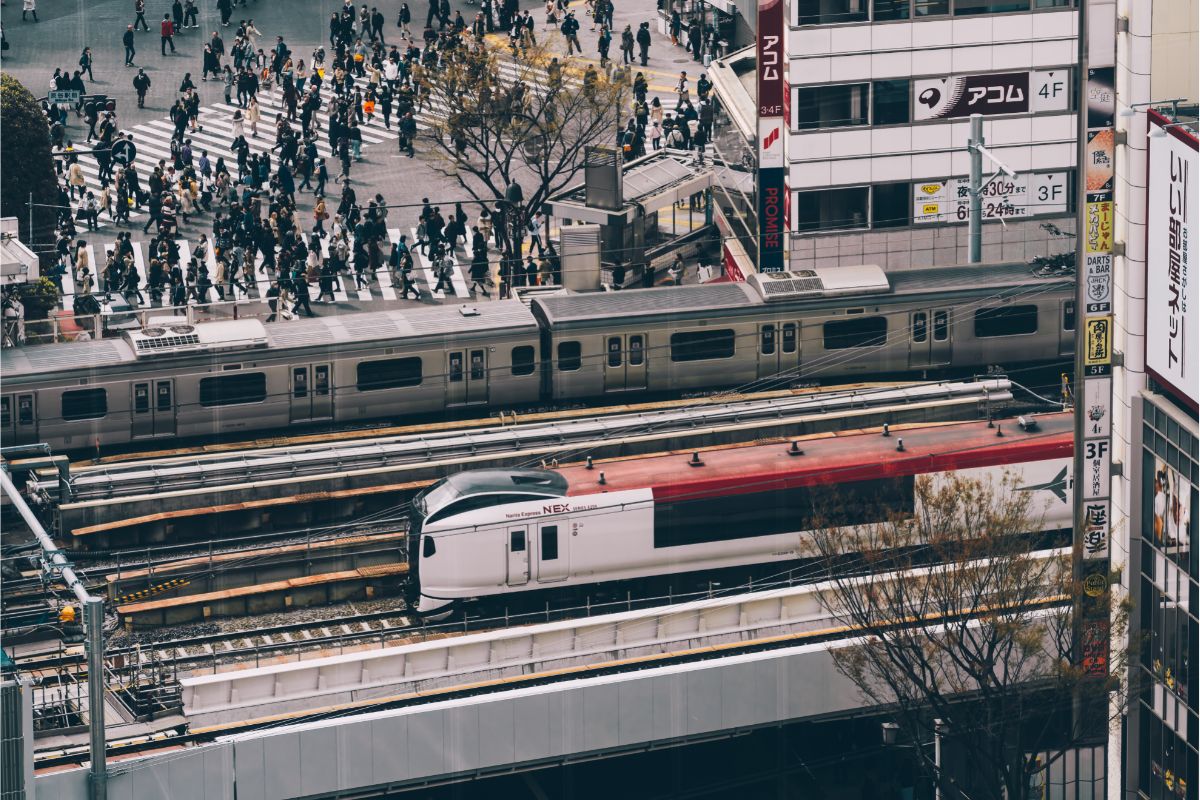Tokyo is often touted as having one of the best transport networks in the entire world. But what is it that actually makes it so special? What is it actually made up of?
And how has it managed to earn such a reputation?

If you have ever found yourself wondering about Tokyo’s transport network, then you could not have come to a better place.
Today, we are going to take a deep dive to look at what exactly the transport network is made up of, and how it manages to operate so effectively.
Read on down below to get started and find some of the answers you have been searching for.
What Is The Transport Network Of Tokyo Made Up Of?
Trains And Subways
It should come as no surprise that Tokyo’s most popular form of transport is via train.
Whether overground or underground trains, railways help to transport millions of people across the city every day.
You only need to look at the most popular station in the city, Shibuya, to recognize just how important rail is in keeping the city moving.
There are countless subway and train options to be found across the city, and many of these trains even extend out to the outskirts of the city, making it a very effective system for daily commuters, or even those visiting the city for a single day.
The train and subway network in Japan is incredibly easy to navigate, and each of the stations is uniquely designed to maximize the flow of foot traffic and to be as easy as possible to travel through. Even tourists can easily navigate these stations!
Buses
As well as Tokyo’s countless subway and train lines, there are also other methods of transportation, such as buses.
These are also very popular options amongst locals, though they are less recommended to tourists to the city.
The reason for this is that navigating the bus network is considerably more difficult than navigating the network for trains and the subway.
Buses can also take much longer to reach greater distances, making them much better suited to locals that only need to travel a short distance, such as from their home to a local grocery store.
Taxis
Taxis are also a very popular option for Locals in the city of Tokyo.
However, once again, they are less easy to recommend to tourists, as Tokyo’s taxis are known to be incredibly expensive.
You would be able to save much more money by traveling via the subway than via a taxi.
However, Tokyo’s taxi system is an effective option if you need to quickly travel to a very specific place within a shorter amount of time.
You should also take into account the potential language barrier. If you cannot speak any amount of Japanese you may encounter some trouble, as some taxi drivers may not be able to speak any English at all.
Note: Drivers do not expect nor accept tips.
How Much Does Tokyo’s Transport Network Cost?
Compared to many other transport networks found in other major cities across the world, Tokyo’s transport network costs quite a significant amount of money to get access to.
If you are planning on traveling within the city, make sure to carefully consider your finances.
Tokyo’s subway system, known as the Metro, varies quite massively in terms of costs.
For a single journey ticket, you can expect to pay between 170 to 320 yen, depending on how far your journey is.
However, there are numerous other options that can help you to save money while using the Metro in Tokyo
You can purchase 24-hour, 48-hour, or 72-hour tickets that give you unlimited access to all lines of the subway over the period of time that the ticket is valid!
As well as this, there are the Suica and Pasmo cards, they can be loaded with money, allowing users to tap the card at ticket gates to gain access to the Metro or to tap onto the buses across Tokyo.
Buses in Tokyo cost a flat rate of 210 Yen for every passenger, and this cost covers all journeys, no matter how long.
This is very convenient for anyone that makes common use of the buses, as including buses on a budget is much easier thanks to the flat rate.
Catching a taxi in Tokyo can be rather expensive. The base fee for all taxis is 410 Yen, which covers the passenger for 1 kilometer.
Every 240 meters traveled after that kilometer is passed will incur an extra 80 Yen charge on top of that rate.
This price is further inflated during the darker hours of the night when an extra 20 Yen is added to the cost!
What Makes Tokyo’s Transport Network So Efficient?
We mentioned earlier that Tokyo’s transport network can be very expensive, however, in general, you are paying more to receive such an efficient service.
Japan, as a society, prizes efficiency and time-keeping, so much so that when a train is even a minute late, a public apology may be made by the train company.
One of the factors that help to keep the Tokyo transport system so efficient is how it moves passengers through the network.
Improved foot traffic in stations leads to more passengers making it to their destinations on time.
To Wrap Up
As you can now see, Tokyo’s world-famous transport network is made up of trains, both over and underground, as well as options like buses and taxis.
Though the network can be very costly, it is incredibly efficient and prompt at all times, hence its healthy reputation.
Frequently Asked Questions
What Is The Main Form Of Transportation In Japan?
The most commonly used form of transportation in Japan is the extensive railway network, known for its speed and efficiency.
What Is The Best Transport In Tokyo?
Easily the best transport method in Tokyo is the Metro system. It is incredibly efficient, low cost, and covers so many parts of the city, making it extremely convenient.
- 16 Best Websites To Watch Japanese Movies With English Subtitles - May 11, 2023
- Is ZIPAIR The Best Airline For Traveling To Japan? - May 11, 2023
- Ryu Murakami Vs Haruki Murakami – Which One Should You Read? - May 11, 2023








